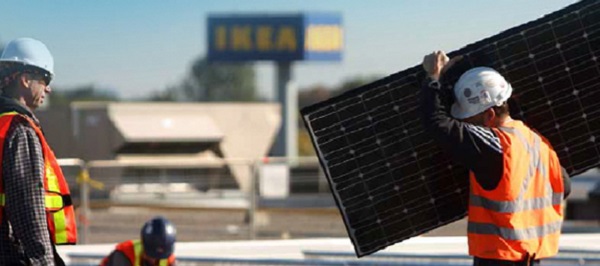Wind, solar, and other renewable energy sources now make up just about 10 percent of the nation’s electricity supply, but transitioning to 100 percent clean energy is both necessary and feasible, academic experts and clean energy advocates said today.
“My colleagues have exhaustively proven, in infinite detail, that we can put together an electric power supply that’s all renewable,” said David Freeman, author of All-Electric America and longtime utility CEO. “Their studies prove that beyond any reasonable debate.”
Freeman and other experts joined Environment America and Frontier Group for an online presentation and discussion of their new white paper, We Have the Power: 100 Percent Renewable Energy for a Clean, Thriving America, which lays out whys, wherefores, and how-to’s for transforming the nation’s energy supply entirely to wind, solar, and other non-polluting sources.
The paper cites the rapidly falling costs of both wind and solar, and notes that the growth in solar has outstripped even clean energy advocates’ expectations.
“Renewable energy has strong public support and clean energy is nearing a tipping point in our economy,” said Rob Sargent, energy program director at Environment America and one of the report’s co-authors. “It’s revitalizing local economies, while every day the imperative of addressing our environmental challenges becomes clearer.”
According to the National Renewable Energy Laboratory, the United States has the technical potential to meet its current electricity needs more than 100 times over with solar energy and more than 10 times over with wind energy.
A review of all seven detailed studies on clean energy systems conducted to date — by academics, government agencies and nonprofit organizations — show there are no insurmountable technological or economic barriers to tapping the country’s vast potential to achieve 100 percent renewable energy.
“It all works, there’s lots of resources, you don’t have the lights go out,” said Dr. Willett Kempton of the University of Delaware, author of one of the studies reviewed in today’s paper.
Economists predict that we can build a 100 percent renewable energy system at costs comparable to or less than what we would have to spend to continue our reliance on dirty energy.
“There’s very little downside to the transition,” said Mark Jacobson of Stanford University, author of several studies showing the feasibility of 100 percent clean energy. “We think this is a winning situation for everyone in the long term.”
Dozens of cities around the country are already leading the way to 100 percent clean energy. Georgetown, Texas, for example, is 90 percent powered by wind power from Amarillo, and will get another ten percent from solar power in West Texas by 2017.
“Our decision here was first and foremost a business decision, and the objective was to have cost certainty,” said Georgetown Mayor Dale Ross. “But we’re also just doing what’s best for our citizens. Don’t we have a moral and ethical obligation to leave the planet in a better condition than we found it?”
In Paris in December 2015, the nations of the world made a historic commitment to protect our climate, pledging efforts “to limit [global] temperature increase to 1.5° C above pre-industrial levels.” Advocates said a transition to 100 percent clean energy was critical to fulfilling the Paris climate agreement.
“We’ve been told by the family doctor, the climatologist, that we have to reduce greenhouse gasses to near zero in the next 35 years, or we’re going to cook,” said Freeman. “This is no longer something that we ought to do, or should do, it’s something we’ve got to do.”
“We can have healthier and more economically vibrant communities right now, and a livable future for our kids,” said Sargent. “But to get there, we need to transform the way we produce and consume energy. The good news is that 100 percent renewable is 100 percent possible.”
Environment America is a federation of state-based citizen-funded environmental advocacy organizations. When you join Environment America, you’re joining the fight to protect the places you love and advance the environmental values we share. You’re key to winning real results for our environment.












Comments